By Rabbi Yair Hoffman for 5tjt.com
We say it in every single Shmoneh Esreh of all eight days of Chanukah. We say it in Al HaNissim. But what is it that we are actually saying?
Artscroll translates it like this:
Thereafter, Your children came to the Holy of Holies of Your House; cleansed Your Temple, Purified the site of Your Holiness and kindled lights in the COURTYARDS of Your Sanctuary.
But wasn’t the Menorah in the Heichal itself? What is going on over here? Why does it say “Courtyard?”
Perhaps it just means within the spaces of and chatzer can mean that in Talmudic terminology. In fact, if we look at the RaDaK on Tehillim 116 – that is how he seems to understand the words.
On the other hand, there can be another possibility. Perhaps the Chashmonayim were so excited as to the Divine Miracle of the battle – the giborim b’yad chalashim – the strong being handed over to the weak – the Temple restored to Torah hands – that they decided to publicize it massively. Perhaps, they actually moved the menorah outside into the Chatzer!
If this is the case, then we have a source for the very first Pirsumei Nissah of Chanukah – not the next year in a get together of Chazal with an official kvius, but the very first opportunity of the very first Chanukah!
The Chasam Sofer in his drashos on Chanukah p. 67 actually understands bechatros kodshecha in this second manner – that they did light the Menorah outside.
He quotes a Rambam in Bias HaMikdash (9:7) that the Hadlakah of the menorah itself is permitted by non-kohanim if it was prepared by the Kohanim and if the Kohanim took it outside. According to the Gemorah in Menachos 28b – the Menorah was three amos high – so it could have been moved.
So, in essence, we have here a full-fledged machlokes – between the RaDaK (a Rishon who was born 100 years after Rashi) and the Chasam Sofer.
It gets a bit more interesting too. The Minchas Chinuch in Mitzvah 98:9 seems to question the aforementioned Rambam – and states that since we rule hadlakah oseh Mitzvah – it has to stay in its proper place. Rav Chaim Soloveitchik zt”l has a different take on it and holds that the Menorah of the Beis HaMikdash has a different set of halachos altogether in this regard.
Another thought: Perhaps the Chashmonayim felt that they simply couldn’t light it in the Heichal because it was filled with all sorts of Avodah Zarah statues as the Shalmei Todah points out in Siman gimel.
They needed time to destroy those statues, and probably clean it out. So it could be that even if we assume that the Minchas Chinuch’s approach is the way that the Chashmonayim went – maybe they made an exception here because of ais laasos lashem – undo your Torah.
The Chasam Sofer even suggests that this could be another answer to the Bais Yoseph’s question about why they celebrated eight days – when they did have a flask of oil that would last one day. He answers that one would need more oil when lighting outside – then when lighting indoors.
Someone sent me a third possible explanation that the walls of the heichal were breached and it became part of the chatzer. This would answer everything beautifully. The author wrote that it is indicated in the words of the Chanukah song – ufartzu chomos migdalai..
If anyone has more thoughts or information please contact the author below.
The author can be reached at [email protected]

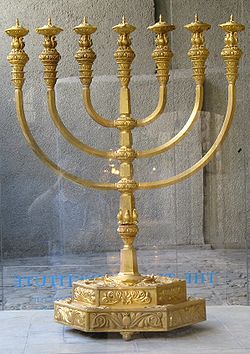
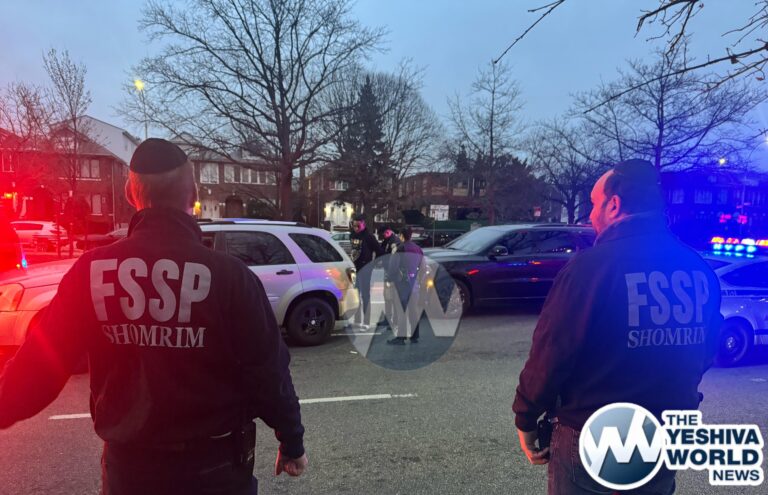

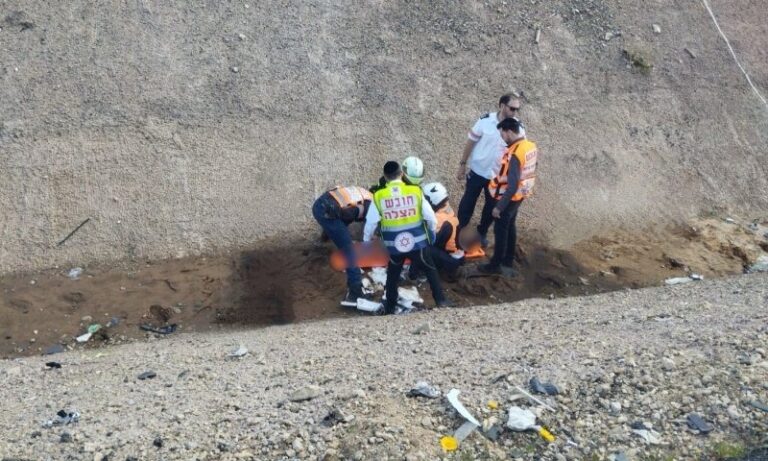
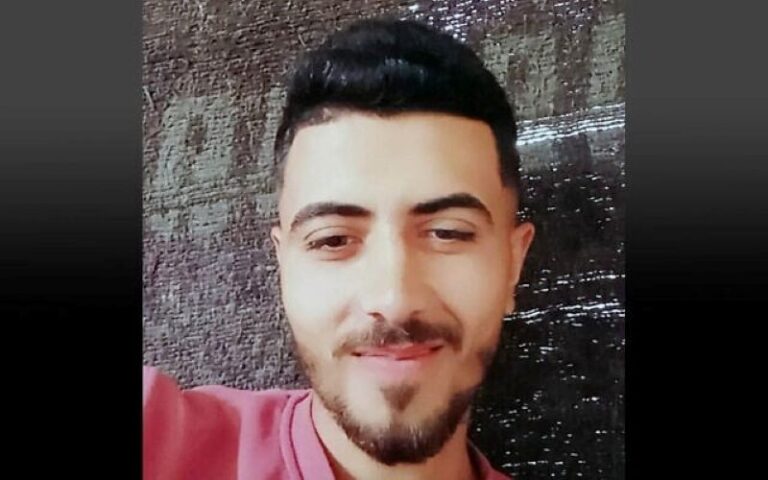
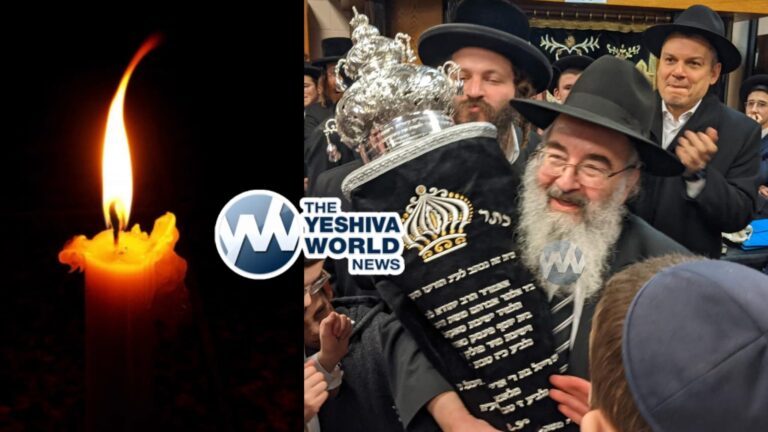
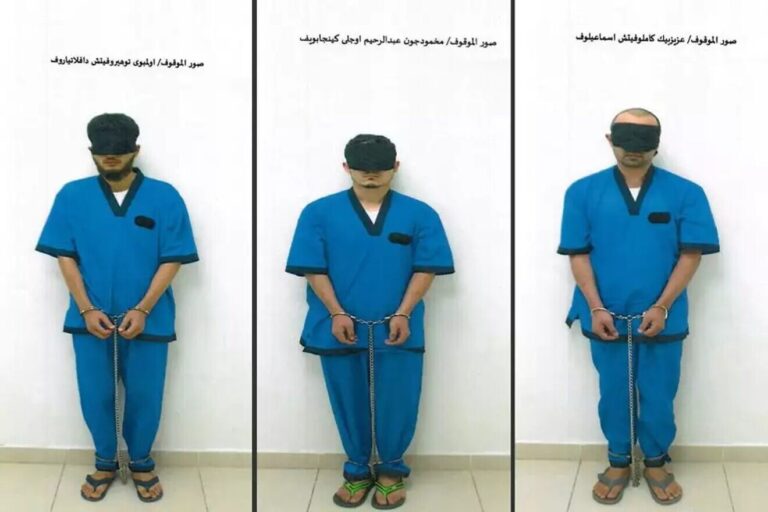
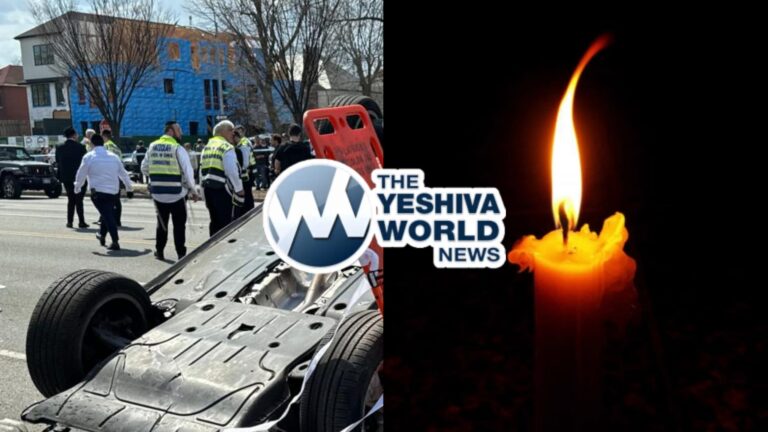
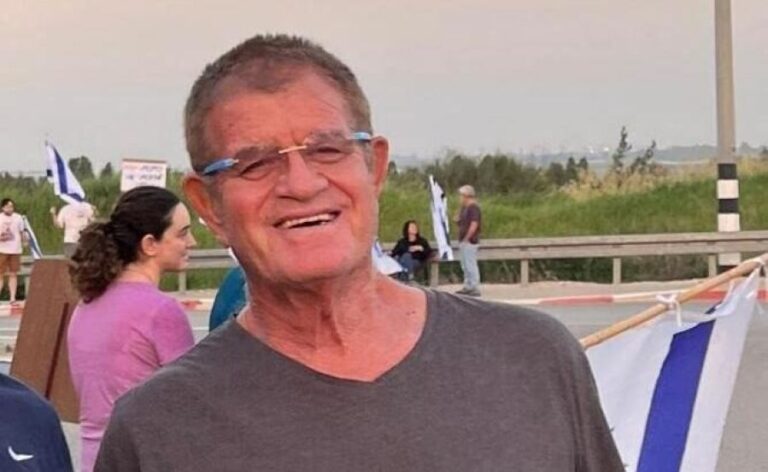

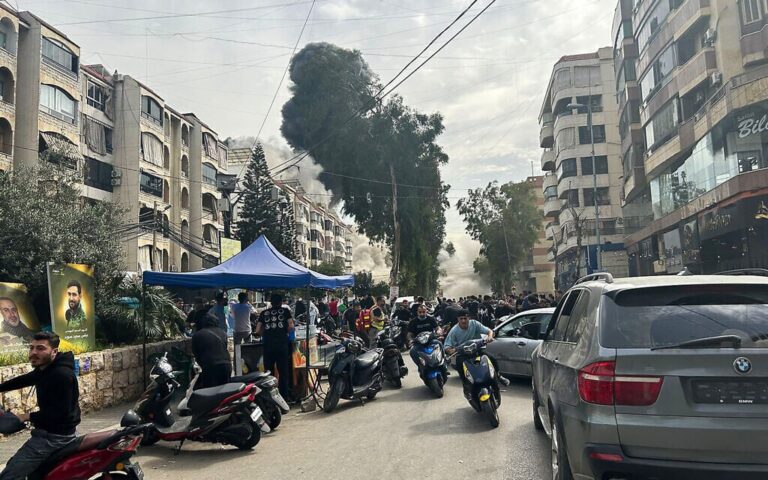
31 Responses
We all know that there were two components to Chanukah: (1) the ness of the pach hashemen (oil); (2) the ness of nitzochon hamilchama (military victory).
The Al Hanisim is said in Modim. Modim is like “Arbah tzrichin l”hodos” – thanking Hashem, in particular for saving one’s life. As such, the Al Hanisim does not speak about the ness of the pach hashemen (oil) at all. It speaks of the military victory, pointing out various aspects of THAT ness. It concludes with the victory of retaking the Bayis, repossessing it by clearing it, and then…the words in question “they lighted candles in the holy courtyards” (- specifically plural, MANY courtyards).
Clearly this lighting has NOTHING to do with lighting the menorah and the miracle of oil. It is all part of the narrative of the ness nitzochon hamilchoma. After victory and repossessing the Bayis, they light candles in many courtyards, candles of simcha – joy and hodaah – thanks giving, for the military victory.
Indeed, it is custamary at simchos to light candles on the tables, as an expression of simcha and hodaah.
(A medrash I saw explicitly states that they used “shpudim shel barzel” metal pipes in which to light these candles in the chatzros kodshecha – the holy courtyards of yerushalayim).
I don’t think they were lighting the menorah in the public square – there is no indication that they were Chabad chassidim, or that they originated this innovative phenomenon of pirsumei nissa.
Rebbetzin, the “iron spits” they used were to make a new menorah, because the old one was defiled and they couldn’t afford to make the new one out of gold.
I always thought that “הפרו תורתך” means “They have voided Your Torah.” Indeed, the ubiquitos green Artscroll tana”ch translates it like that. (If they would use Rabbi Hoffman’s translation of the shoresh, I guess they would have translated it as “they have undone Your torah” or “they undid Your torah.” I think that Rabbi Hoffman’s translation of “undo Your torah” (which, if he would have used the Artscroll translation of the shoresh would probably have read “void Your torah”) is mistaken. Anyone have any light they can shed on this?
Meaning: The Artscroll way (which i believe is correct) means that the bad guys have voided the torah whereas Rabbi Hoffman’s way (which I believe is incorrect) is an exclamatory demand/request of HaKadosh Bari=uch Hu that, for His sake, He void the torah.
And @Milhouse is obviously correct.
No matter the ambiguity of the purpose for the shpudin shel barzel, which we can argue – my point was that the Al HaNissim does not speak of the Ness HaShemen AT ALL, only about the Ness of Nitzochon Hamilchama (and therefore it is inserted in the Brocha of Modim – Hodaah, as in Arbah Tzrichin L’Hodos, when salvaged from risk of death). As such, hidliku neros bchatzros kodshecha is connected to the victory of the Nitzochon Hamilchama not the hadlaka of the menorah) and Ness pach HaShemen). That seems logical and obvious. In addition, as I pointed out, the plural is used, b’chatzros kodshecha, implying that multiple hadlaks of neiros in many courtyards. This clearly isn’t refering to lightingthe menorah, but lighting fames of simcha and victory throughout the courtyards of Yerushalayim. This is all poshut and how I translated pirush hamilos in my davening.
Addendum:
A glaring omission in the article, when the Chasam Sofer is cited, one needs to know that that Chasam Sofer gives a SECOND explanation (based on the Medrash – Psika) that they lighted shpudin shel barzel outside the Mikdosh – that when they lighted the Menorah in the Heichol, they realized after an hour that the oil was miraculous, so they went outside and lighted the shpudin shel barzel to make known to outsiders that a great ness is taking place inside. They used oil that was chol, not kodesh. And each night they added another shpud shel barzel, as a way to be mefarsem the ness and express l’hodos u’lehalel.
More so, my husband has Avudraham (Seder Tefilos Chanuka) which states: Chatzros kodshecha, as in (Yeshaya 62:9) my holy courtyards, which speaks about the widespread CITY of Yerushalayim, since the Azorah is not a place for drinking…
That means, Chatzros Kodshecha was NOT at all on the premises of the Bais Hamikdosh’s Azara.
The confusion people have can be categorized like this, in a “Yeshivbish manner”:
Does “hidliku neros b’chatzros kodshecha serve as a continuation to the activities inside the Heichal, as part and parcel with “u’pinu es heichalecha, v’tiharu es mikdoshecha, and also v’hidliku neros b’chatzros kodshecha? That’s what many of you think.
Or, maybe “hidliku neros b’chatzros kodshecha” is a new thought, and is connected to the CONTINUATION, that the celebration was: hidliku neros bchatzros kodshecha, AND kovu shmonas yemei chanukah eilu, all part of l’hodos u’lehalel leshimcha hagodol?
Now, if the hidliku neros is part of the continuation, then it has NOTHING to do with activities inside the heichal, it has nothing to do with lighting the menorah, but part of the grand celebration of the ness l’hodos u’lehalel!
And that is a new insight and pshat for all my friends to think about, because it answers all the kashas.
@Rebbitzen Goldenpickanicerscreenname:
Let me clarify a few things:
1) I certainly agree with you that the pashut pshat of hidliku neiros is that they cleaned up and “re-lit candles in” the Beis HaMikdash complex. I have not seen the meforshim on this matter, but I have always thought this to be the explanation.
2) I don’t know if you are actually a woman or not (so I don’t know how schooled you are likely to be in the accepted guidelines for halachic milchamta shel torah), but the way you brazenly and unapologetically argue with the Chasa”m Sofer (yes, even though you say he does bring another pshat) is despicable; you need to tone that down immediately. If you had said that Rabbi Hoffman’s understanding of the Chasa”m Sofer appeared somehow incorrect, or if you had said, “It seems that the words are more mashma like my explanation; and even though I’m sure that if the Chasa”m Sofer was here, he would have arguments against me, I still feel comfortable with my explanation since it would appear to lema’aseh be the pashut pshat and also would fit nicely with the Avuderham,” it would bring a much more respectful tone to your arguments. Respect is important.
3) Regarding me saying above that @Milhouse is obviously correct —
1) That wasn’t a respectful way to phrase my point. I apologize.
2) My reasoning for siding with Milhouse was just that it is extremely well-known that Chaza”l say that the menorah lighting on Chanukah was done with shpudim shel barzel. I simply thought (admittedly without seeing the midrash under discussion) that it was unlikely that your explanation of the shpudim shel barzel was correct, given the fact that it argues with such a commonly espoused understanding of the matter. Of course, that isn’t actually a proof against you; it simply makes your explanation less likely to be correct.
Now, why has no one commented on my “hefeiru torasecha” comments?
Yashar, your point is well taken (is that respectful enough?), which is specifically why I hastily posted an Addendum.
You see, chas v’sholom to suggest that I “argue” with the great Chasam Sofer, rather, the Chasam Sofer himself offers TWO possible options, and the article was kind-of misleading by only bringing the first option the Chasam Sofer suggests, a half representation of the Chasam Sofer’s holy words (my Bubby used to say “a halba emes iz ah gantze sheker” – a half truth is a complete lie).
Once we see the Chasam Sofer in its entirety, we become aware that he was offering two possible explanations that are very different from each other. By adopting his second explanation, in no way am I c”v “arguing” with him.
I am adopting his second explanation, that the shpudin shel barzel were NOT lighted as a menorah but as part of L’hodos u’lehalel, to be mefarsem the ness.
I do diverge from his details of his suggested explanation. The Chasam Sofer held (in second option) that they were being mefarsem outside the bais hamikdosh about the ness that was taking place inside with the shemen hamenorah.
My respectful understanding is that the Chasam Sofer was not providing an exhaustive list of every possible explanation. He was giving us two general approaches, which might be expanded to several sub-catagories.
Alternatively, I followed the famous Talmudic line, “Is the Tanna a merchant that must list all his wares?!” The Chasam Sofer gave us two, but does not oppose a third, fourth or additional explanations.
I articulated the reasons why I humbly suggested to alter slightly the Chasam Sofer’s second explanation: Nothing in Al Hanisim makes mention of the ness hashemen. If the ness itself is not mentioned, why include a detail that is indirectly related to the ness hashem – that they lighted flames outside to publicize the unmentioned ness that took place inside?! In Talmudic terms: Ikar chosser min hasefer!
Also, if they lighted outside the heichal to publicize the ness taking place inside, there lacks an explanation why the plural: chatzros kodshecha, and not merely the singular?!
Granted, the Chasam Sofer held that they lighted MULTIPLE hadlokos, because they were lighting each night for 8 nights, first night one shpud shel barzel, then another additional each night. But that fully explains a plural hadlaka, not comes short on explaining the plural chatzros!
Finally, the words “hidliku neiros b’chatzros kodshech” are ambiguios if they are part of the earlier words in Al Hanisim –
Either as activities that the Chashmonoim did as part of the nitzochon, when they re-took the Bais Hamikdosh: 1. bo’u lidvir baysech; 2. pinu es heichalecha; 3. tiharu mikdoshecha, and ALSO 4. hidliku neiros bchatzros kodshecha.
Or,
The words are part of the ending of haneiros halolu, part of the celebration: 1. hidliku neiros bchatzros kodshecha; 2. kovu shmones yemei chanuka, which these two were done l’hodos u’lehalel, to thank Hashem for the ness of nitzochon hamilchama.
As an aside, you question my gender. Why is it that males get intimidated when a bas-yisroel seems to have a grasp of inyanim.
@Rebbitzen Goldenpickanicerscreenname:
I hear all your points. Thank you.
I will point out that I never got intimidated. I simply said that I wasn’t sure if you were schooled in the p.c. of torah discussions due to your questionable gender. However, I will now actually make you mad: after reading your latest comment and seeing how well-phrased and thought-out it was (to a much higher extent, I hope you’ll admit, than the original comments) I am now 100% sure that you are a male!
HAHAHAHAHAHAHAHAHAHAHAHAHAHAHAHAHAHA!!!!!!!!!!!!! Too bad… you won’t change my mind!!!!!!!!!!!!!!!!!!!!!!!!!!!!!!!!!!!!!!!! HAHAHAHAHAHAHAHA!!!!!!!!!!!!!!!!!!!!!!!!!!!!
Thank you so much for the extremely insightful, intriguing and enjoyable discussion, Rabbi.
P.S. I don’t think the above is disrespectful; all in good fun.
Also, gosh, who said I’m a male?
HAHAHAHAHAHAHAHAHAHAHAHAHAHAHAHAHAHAHA!!!!!!!!!!!!!!!!!!!!!!!!!!!!!!!!!!!!!!!!!!!!!!!!!!
Just kidding; I know I clearly implied as such above.
Yasher, your comment was disrespectful to ALL women. It assumes that women are less able than males to learn and understand Torah subjects. That is a falsehood!
Those who know me, know that I learn daf yomi with my learned husband and b”h joined the siyum hashas as a proud misayem! (I strongly recommend to young newly married kallahs to enhance their relationship by being yovayah itim with their husbands).
There are quite a few seforim that were authored by woman.
Women know more than just the Ramban on Chumash and the Radak on Nach! We excel above many men in our knowlege of many pirushim on Tefilah (the subject we are dealing with here). We spend time delving in depth into the halachic details of mitzvos that we are obligated in (such as this topic – chanunkah). Plus we women learn medrash (again – the Piska is the medrash of shpudin shel zahav, you “heard of it”, while I learned it!), and certainly Divrei Yemei Yisroel, our glorious Jewish history.
My gender is not the issue here. It’s your attitude. On the one hand you seek to be the PC Policeman while “toch kdei dibur” you violate any semblance of PC and add childish multiple “HAHAHA” and multiple “!!!”. By all measures, that crossed the line of “al tarba sicha im ha’isha”.
The point of lighting flames for simcha and hodaah should be elaborated at bit more; flames (torches) were lighted at simchas bais ha’sheiva, strictly as an expression of simcha. That was one form of expression of simcha! Surely flames and torches were also lighted as expression simcha for the nitzochon hamilchama! Hence, hidliku neiros bchatzros kodshecha.
The point of lighting flames for simcha and hodaah should be elaborated at bit more; to add clarification to my earlier comments.
Flames (torches) were lighted at simchas bais ha’sheiva, strictly as an expression of simcha (see Sukkah 51a).
That was one common form to express simcha! Today too at many simchos we light candles – as expression of simcha and hoda’ah (-thanks).
Surely flames and torches were also lighted by the Chashmonoim as expression simcha for the nitzochon hamilchama!
Hence, hidliku neiros bchatzros kodshecha.
@Rebbitzen Goldenpickanicerscreenname:
It is most certainly not disrespectful to any woman whatsoever to presume that since she follows halacha, she obviously refrains from learning daf yomi and would be less schooled than men in the p.c. guidelines of areas of torah argument in which she has no halachic business involving herself. [I won’t bother trying to find a source for the issur; I’m sure you can provide it for me (and I actually mean that very seriously).]
I will note that it should not be logically expected that she would fully glean an understanding of the relevant p.c. guidelines just from studying the subjects that she is supposed to study (delineated by yourself, above).
I certainly hope that young, unassuming newlyweds will indeed be kovei’a ittim with their husbands on appropriate subjects.
Seforim authored by woman on appropriate subjects have absolutely no bearing on the discussion of whether or not a proper bas yisroel in our day and age should proudly (!) flaunt the guidelines of halacha and learn topics in which she has no business involving herself.
Upstanding bnos yisroel most certainly do know much more than a few peirshum on chumash; kol hakavod to them! Kein yirbu!
It is strange of you to mock my torah knowledge when, in actuality, you have no idea whether I or you are more learned.
It is certainly unwise to infer from the fact that I never saw a specific midrash inside that I am somehow less learned than you.
It is stranger still that you infer the above while displaying a lack of familiarity with the very sefer quoted; the name is “Pesikta,” not “Piska.” (When you made the same mistake above, I ignored it; now, however, in that very paragraph, you attempt to mock my own familiarity with torah sources.)
It was incorrect of me — and quite childish, as you said — to include the leitzanusdike phrases you quote above. It most probably did indeed violate the teaching you quote. I regret it and I would like to sincerely apologize.
I am happy that, in my estimation, we are having an otherwise very upstanding, appropriate and beneficial discussion.
I like your point regarding the flames.
For those that are unfamiliar: The Pesikta is composed of Piska’ot. Piska is a correct term for a particular Medrash in Pesikta. Obviously you didn’t know that!
A scholarly secular article about this and other topics regarding Piska’ot in the Peskikta De Rav Khana: “Literature and Liturgy in Times of Transition: The Piska “And It Happened at Midnight” from Pesikta de-Rav Kahan”a, published by Cambridge University Press: 23 November 2016. (available on-line)
@Rebbitzen Goldenpickanicerscreenname:
First of all, *women. (Sorry for the misspelling above.)
Second of all, I want to correct two sentences that I wrote in my last post.
I wrote: “…and would be less schooled than men in the p.c. guidelines…” This phrase, however, does not really respond to your argument that it is disrespectful to assume that “…women are less able than males to learn and understand Torah subjects” — an argument you were apparently making in response to my earlier post, stating: “…after reading your latest comment and seeing how well-phrased and thought-out it was (to a much higher extent, I hope you’ll admit, than the original comments) I am now 100% sure that you are a male!”
The sentence I wrote should have read: “…and would be less schooled than men in the lomdishe manner of thinking, writing and phraseology (which, incidentally, have no connection to one’s general brainpower); as well as in the p.c. guidelines…”
Additionally — and more importantly — the explanatory sentence following shortly afterward should have been written differently, as well. The sentence read: “I will note that it should not be logically expected that she would fully glean an understanding of the relevant p.c. guidelines just from studying the subjects that she is supposed to study (delineated by yourself, above).” It should have read: “I will note that it should not be logically expected that she would fully acquire the lomdishe manner of thinking, writing and phrasing (which, again, have no connection to one’s general brainpower) — or glean an understanding of its relevant p.c. guidelines — just from studying the subjects that she is supposed to study (delineated by yourself, above).”
I regret the sloppiness in logic that was displayed by the above two errors.
When you “regret”, is it teshuva m’ahava, or teshuva m’yira, or teshuva machmas yisurin?
In any event, hakol mochul loch! No need for more klapping al chet. Your apology is accepted.
Remember when you say over my chidushim, to please be omer dovor b’shem omro. It’s not for my sake, since I do not need such lovod (I excel in midas anovah and being a sh’fal ruach meod), but rather to be mayvee geulah l’olom – for the good of klal Yisroel.
A small kasha I have in the Al HaNissim.
“Matisyahu ben Yochonon Kohen Gadol” – who was the Kohen Gadol: Matisyahu or Yochonon or both?
In other words, suppose the Kohen Gadol was Matisyahu, would the placement of the title be immediately after his name – as in “Matisyahu Hakohen Gadol ben Yochonon”?
Suppose they were both Kohanim Gedolim, would it state “Matisyahu Hakohen Gadol ben Yochonon Hakohen Godol” (as we would write with the title Harav, “Harav Shmerel ben Harav Berel”)?
There seems to be ambiguity as to whom exactly was the Kohen Gadol?!
@Rebbitzen Goldenpickanicerscreenname:
First of all, I just want to clarify that my response beginning with the spelling correction regarding women, was sent in before your response regarding the Pesikta was posted. I would have included the below discussion pertaining to the word “Pesikta” had I seen your response in time.
At the very real risk of belaboring the point, let me say this: You are entirely proving my point when you refrain from using the term “Pesikta.” My entire point, as I believe you understand, is that halacha-abiding women would not be presumed to be so familiar with generally accepted manner of speaking, etc. in the yeshiva world. To that end, “Pesikta” is always used and “Piska/Psika (which you use interchangeably)” is NEVER used.
Additionally, I must point out that you slightly implied, in my opinion, that you thought Piska/Psika was the title for the entire compilation of Piska’ot. See your phrasing above: “based on the Medrash – Psika.”
You are additionally proving my point when you later ask a “small kasha that ‘you’ have” on Al Hanisim; anyone familiar with the yeshivishe world would know that your kasha (which you seem to begin by phrasing as a shayla, but that is not my point) is a very well-known point of debate/discussion and would never call it “their” kasha even if they did, as did you (and commendably so) think of it on their own.
Again, I never tried to insinuate that women are less smart; I simply was saying that they shouldn’t be presumed to be schooled in yeshivishe ways, modes of thinking/thought and mannerisms (writing or otherwise).
But again, good question.
I would venture to say that the teshuvah was teshuvah mei’ahava for perhaps being oiver on “Al tarbeh sichah.”
@Rebbitzen Goldenpickanicerscreenname:
Excuse me, I realize I misunderstood your question regarding regret. Now that I understand to what you were referring, I will answer thusly: It was not teshuvah at all. In fact, I specifically refrained from using a term like “apology” or “sorry.” Rather, it was non-altruistic, normal human regret for perhaps having sounded stupid.
@Rebbitzen Goldenpickanicerscreenname:
Why do you ignore the point I made regarding women learning daf yomi?
@Rebbitzen Goldenpickanicerscreenname:
Clarification — I did not mean that one would never say “Piska such and such;” I meant that the term “Pesikta” is invariably used in the exact context of your relevant posts.
I see an obvious contradiction in your reasoning.
First you have a safek, “don’t know if you are actually a woman or not”, and “I wasn’t sure if you were schooled in the p.c. of torah discussions due to your questionable gender”.
But then you conclude with a vaday, “I am now 100% sure that you are a male!” based on “reading your latest comment and seeing how well-phrased and thought-out it was”.
But then you seem to circle back, “It is stranger still that you infer the above while displaying a lack of familiarity with the very sefer quoted; the name is “Pesikta,” not “Piska.”
This you support by stating, “women would not be presumed to be so familiar with generally accepted manner of speaking, etc. in the yeshiva world. To that end, “Pesikta” is always used and “Piska/Psika (which you use interchangeably)” is NEVER used.”
And then you go further, “You are additionally proving my point when you later ask a “small kasha that ‘you’ have” on Al Hanisim; anyone familiar with the yeshivishe world would know that your kasha.”
Which logically forces us to conclude that you are no longer “100% sure that [I am] (you are) a male!”
Confusing?!
@Rebbitzen Goldenpickanicerscreenname:
Correct. Based on your indignant response to my statement that you were “100%… a male,” I decided to no longer question your stated gender.
If our conversation ends up ending here: Hatzlacha! Until next time!
I ignore the point you made regarding women learning daf yomi because, anyone who was misayem and learns the daily daf for over seven years, has earned the right to ignore those who didn’t.
@Rebbitzen Goldenpickanicerscreenname:
You are again presumptuous. And I do not think that someone who did something against halacha has earned any right whatsoever.
It say “vteharu es mikdosh’cha” before v’hidlike nayros. Since it would take 7 days to do this with sprinkling of the poroh aduma, afterwards it says v’hidlike nayros which is a week after Chanuka started . So v’hidlike nayros has no relavance to the lighting of the Menorah on 25th Kislave but so to speak .they Switched on the lights in all the Chatzerous of the Beis Hamikdiosh AFTER The Poroh Adumah Cleansing process
@Rebbitzen Goldenpickanicerscreenname:
Re: Your Kashya on the phraseology of Al Hanissim. I will attempt to give an answer based on Megilas Antiyochus. It says that Yochanan was a Kohen Gadol, he was a son of Matisyahu, and he had four brothers. When Yochanan came back victorious from war, and after having killed Nikanor, he built a monument (to his name) which he called MAKABI. This word seems to be an acronym for Matisyahu Kohen Ben Yochanan. You may ask but isn’t that his name in reverse? The answer is based on a Mishna in Gittin 87a where Rashi explains that the Yevanim (!) wrote Yosef Ben Shimon, to mean – Yosef’s son: Shimon. So too MAKABI and Al Hanissim refer to Matisyahu Kohen ‘s son: Yochanan (the Kohen Gadol)!
In response to Yashar: The translation of the Pasuk in Pshat is, “It is time to act for Hashem – they are annuling your Torah!” R’ Hoffman is referring to the Derashah of Chazal which rereads the Pasuk to mean, “There is a time to act for Hashem and void [parts of] the Torah.” (IMHO, R’ Hoffman was too terse here.) An example of this would be the transcribing of Torah shebe’Al Peh. Another would be the establishment of Bais Yaakov, and indeed, the widespread learning of Torah by women. This is a very delicate issue whose use can only be decided by Gedolim.
And Rebbetzin,
A very minor correction – the proper past-tense verb to use here is “lit”, not “lighted”.
@mobico: Thank you for your explanation regarding the derasha of hefeiru torasecha. I appreciate it.